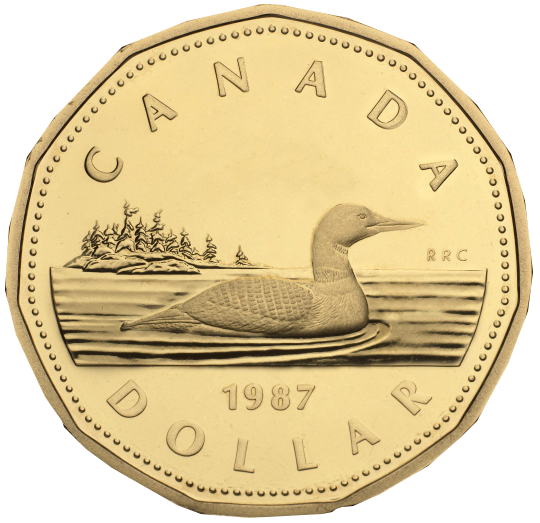

At least it’s “Not American”. The Quaker Oats listing is a bad joke: – Quaker is owned by PepsiCo.
@pauldrye@spacey.space : Unbuilt crewed space projects, phantom islands, alternate history, Muppets, Atomic Age design, weird-looking galaxies, temporary moons of Earth, languages, cartography, the Ediacaran biota, old cutaway diagrams. Canadian with malice aforethought. Baggage Books on DriveThruRPG.


At least it’s “Not American”. The Quaker Oats listing is a bad joke: – Quaker is owned by PepsiCo.
It’s often under its Italian name, passata. I’m Canadian too and it’s usually sold in glass bottles on the same shelves as spaghetti sauce. It’s from Unico for the one I currently have in my fridge, but there’s a few brands.


Whoever the writer thinks should be faster, so as to serve the needs of the story being told.
Partly. Their largest shareholder is RBI, which is Brazilian-American-Canadian. Head office is in First Canadian Place in Toronto. The terms of the deal that RBI cut to buy them has the Canadian government requiring them to keep most of their office side of things in Canada.


No, they’re a big box store, not associated with a mall like a department store.


It’s been a long time coming. Department stores in Canada have been dying off one by one, and they were the last. It’s a business model that just doesn’t work here anymore.
*oldmanyellsatcloud.jpg *


Cadbury is also owned by Mondelez, so many British chocolate bars are out too.


The EU already has a land border in the Americas. French Guiana is part of the union and it touches Brazil and Suriname. So the gate is already open to work it from the south up instead of the north down.
I read somewhere – great source, I know – that the existing rule is that the country has to be in Europe, though, not that it has a border. Otherwise Malta, Ireland, and Cyprus would not qualify, and the UK too back when they were in.
Oddly enough, the Canadian/Danish border is a questionable one for this purpose anyway – Hans Island (where the border is) is part of Greenland and Greenland is not in the EU. It left in 1985 and is now one of the “Overseas countries and territories” that have special rights in relation to the EU but are not actually in it.
So far so good, though I haven’t really stressed it out with anything complicated yet. I write game books and things, but that’s been in Office 365 and (lately) LibreOffice.
There’s not a lot, but if you’re willing to look at “Not American” rather than “Canadian” there’s a few.
Daily software, I’ve been using Switzerland’s kSuite 's free tier for about a week, for emails and a Google Docs/Sheets replacement. It’s been fine so far.
For Ontario readers, Farm Boy’s store brand cereals are made in Canada.
No, they do – it’s just not a codified constitution like almost all other countries have.
Proponents of the idea believe that a constitution that has evolved bit by bit over a long period of time and across a bunch of different charters and unwritten agreements/customs is stronger that one that’s done all in one shot. You’ll see the unflattering metaphor that “a tree is stronger than a weed”, which seems a bit unfair but it’s reasonable point – if not one that’s beyond argument or anything.
Commonwealth countries are politically conservative, small “c” and not big “C”, as the general attitude is “if it ain’t broke don’t fix it, even if it’s objectively kind of stupid”. There was a good reason for every one of the decisions that led to today, don’t &^%$ with it, just in case.
The key word in “constitutional monarchy” is “constitutional”, not “monarchy”. The monarch must follow the parliament’s requests, and not doing so is unconstitutional. Parliament is sovereign, at least in all of the countries that derive their monarchy from the UK’s.
Outside of the UK there wouldn’t be a fight anyway: in all the Commonwealth countries (except the ones that have since gone fully republican), the monarch has a representative called “the governor general” who is selected by the Parliament and recommended to the monarch at which point see above. The monarch has to take the advice of who is to be their governor-general. Issues basically never get to the monarch for them to mess anything up. The loyal-to-his-country deputy gets first crack at everything the monarch does in theory and has no reason to go against Parliament. If somehow the g-g or the king did speak out, it’d be a legal mess but everyone would ignore them. Practically we’d either get ourselves a new monarch or just say to hell with it and become a republic.
To answer your specific question then, yes, it’s pro forma. The monarch’s role is to be the embodiment of all legislative, judicial, and executive power, in a fairly close analog to what the American Constitution is. But the Constitution can’t exercise any of those powers and the monarch can’t either. It’s just a historical oddity that they can walk and talk, unlike a piece of paper.


“Revolutionary Paris” had me thinking about this entirely the wrong way.
Ganong makes Chicken Bones, which are a cinnamon candy. They’re mostly chocolate, though: Pal-o-Mine chocolate bars, Delecto Peanut Clusters, and they’re introducing a new one they bought out from an American manufacture: Sixlets, which look like chocolate M&M’s from the pictures and their website.
Prana makes a bunch of nut snacks like salted cashews and almonds.


In the case of velocity, all neutrinos move at essentially the speed of light (they have the slightest amount of mass which slows them down, each of the three types of neutrino a different mass compared to the other two but still very, very, extremely low masses). Only neutrinos less than 2 eV are noticeably slower than light, and that’s quite a low energy. The almost-exactly-light-speed has been confirmed by, among other methods, comparing bursts of neutrinos from supernovas and other intense sources to the photons coming from the same sources.
The photons move at the speed of light by definition and MeV and GeV energy neutrinos show up in detectors at the exact same time down to as close as we’ve been able to measure it (roughly one part in a billion, I think it is).


Yes, but it doesn’t matter enough. The square-cube law means that the mass being supported goes up faster than the area of the layer doing the supporting does. So each additional brick on the bottom still ends up carrying more weight as the pyramid gets taller.


Depends on the compressive strength of the material. Sooner or later the weight of the pyramid above the base exceeds the base’s ability to support it. Considering that a mountain is basically a stone pyramid, Everest has to be in the neighbourhood of how tall you could go – call it 10-12 kilometers high. Other materials would do better.


It’s the only one in English unless you allow things like “The absolute value of -20”.
Misterspock.